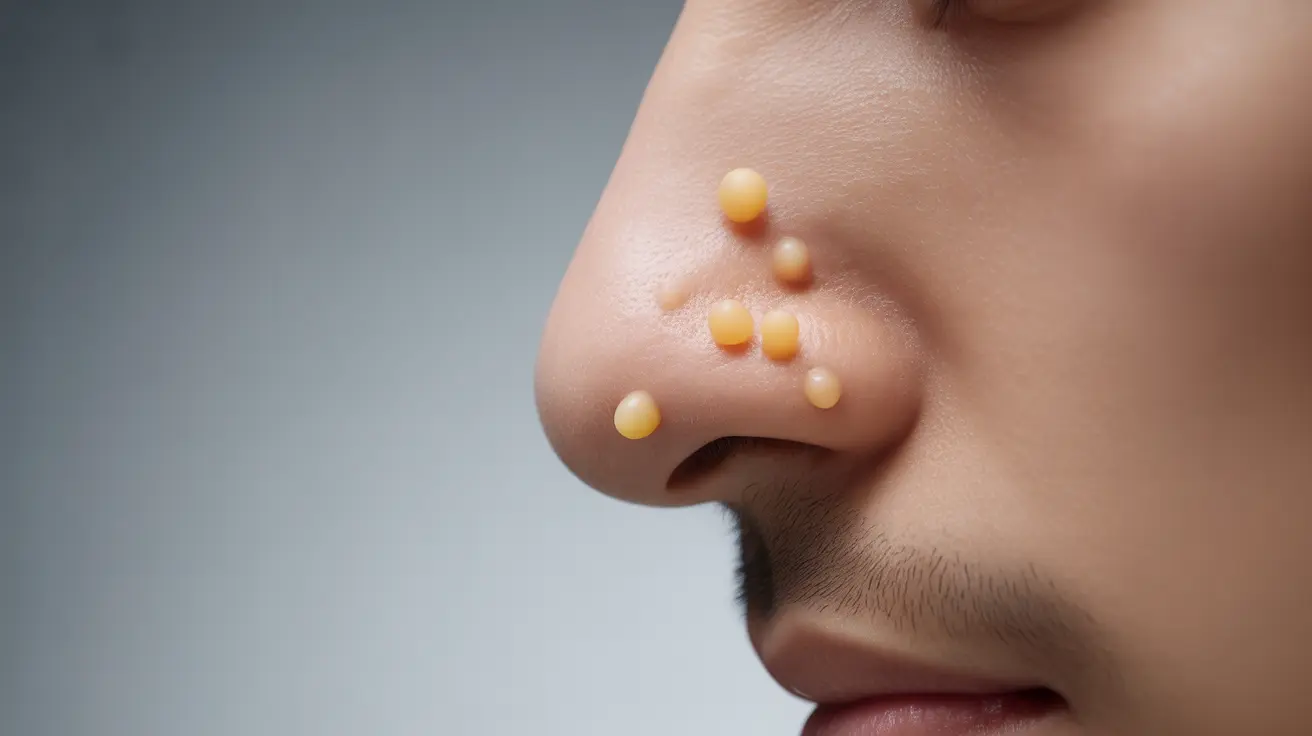If you've noticed small, yellowish or flesh-colored bumps appearing on your nose, you might be dealing with sebaceous hyperplasia. These benign growths occur when sebaceous glands become enlarged, creating distinctive bumps on the skin's surface. Understanding what these bumps are and how to manage them can help you make informed decisions about your skin health.
While sebaceous hyperplasia is completely harmless, its appearance on prominent facial areas like the nose can cause cosmetic concerns for many people. This comprehensive guide will help you identify, understand, and explore treatment options for this common skin condition.
What Is Sebaceous Hyperplasia and How to Identify It
Sebaceous hyperplasia appears as soft, pale yellow or flesh-colored bumps on the nose and other facial areas. These distinctive lesions typically have the following characteristics:
- Small, round bumps (1-3 millimeters in diameter)
- Central depression or dimple
- Smooth, soft texture
- Often appears in clusters
- Yellowish or whitish color
- No pain or discomfort
These growths develop when sebaceous glands become enlarged due to various factors, including aging, hormonal changes, and genetic predisposition. They're most common in adults over 40, particularly those with oily skin types.
Understanding the Causes and Risk Factors
Several factors contribute to the development of sebaceous hyperplasia on the nose:
- Aging and hormonal changes
- Genetic predisposition
- Excessive sun exposure
- Oily skin type
- Decreased cell turnover
- Androgens (male hormones)
Medical Significance and Diagnosis
While sebaceous hyperplasia might resemble other skin conditions, including basal cell carcinoma, it's important to understand that these growths are completely benign. However, proper diagnosis by a healthcare professional is essential to rule out more serious conditions.
Treatment Options Available
Several treatment options exist for managing sebaceous hyperplasia on the nose:
Professional Treatments
- Electrocauterization
- Laser therapy
- Photodynamic therapy
- Chemical peels
- Cryotherapy
At-Home Management
- Retinoid creams
- Regular gentle cleansing
- Oil-free moisturizers
- Sun protection
- Proper skin care routine
Prevention Strategies
While you can't always prevent sebaceous hyperplasia, certain measures can help reduce your risk:
- Use broad-spectrum sunscreen daily
- Maintain a consistent skincare routine
- Avoid excessive sun exposure
- Choose non-comedogenic products
- Stay well-hydrated
- Monitor hormonal changes
Frequently Asked Questions
What does sebaceous hyperplasia on the nose look like and how can I identify it?
Sebaceous hyperplasia appears as small, yellowish or flesh-colored bumps with a characteristic central depression. They're soft to the touch, typically 1-3mm in size, and often appear in groups on the nose.Is sebaceous hyperplasia on the nose harmful or could it be skin cancer?
Sebaceous hyperplasia is completely benign and not harmful to your health. However, because it can sometimes resemble skin cancer, particularly basal cell carcinoma, it's important to get any new growths evaluated by a healthcare provider for proper diagnosis.What are the most effective treatment options for sebaceous hyperplasia bumps on the nose?
The most effective treatments include professional procedures like laser therapy, electrocauterization, and photodynamic therapy. For at-home management, prescription retinoids and consistent sun protection can help control the condition.Can sebaceous hyperplasia on the nose go away on its own or does it require treatment?
Sebaceous hyperplasia typically doesn't go away on its own. While treatment isn't medically necessary, many people choose to pursue treatment for cosmetic reasons. Individual bumps may sometimes appear to resolve temporarily but often recur without intervention.How can I prevent sebaceous hyperplasia from developing or worsening on my nose?
Prevention strategies include using daily sun protection, maintaining a proper skincare routine, avoiding excessive sun exposure, and using non-comedogenic products. While you can't completely prevent the condition, these measures can help minimize its development and progression.




